TS&T and John Gilkes
LaurelHollowPark.net, an informative website created and
maintained by Mark Gonzalez. Copyright © 2009-.
|
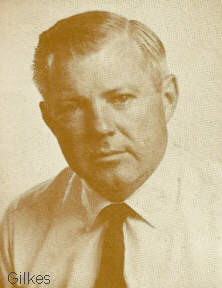 There are some really big names in the world of collectible dinneware. Don Schrekengost and his brother Vicktor, Eva Ziesel, Ben Seibel, and Russell Wright are just a few that are responsible for the modern style dinneware took after WWII. However, there's one that is often overlooked and he created a good amount of dinnerware produced in the 1950s and '60s; John James Gilkes. Gilkes obtained his Bachelor of Fine Arts degree from Alfred University and his Masters degree from Ohio State University. He also recieved the B. Altman Design award at least twice during his life. There are some really big names in the world of collectible dinneware. Don Schrekengost and his brother Vicktor, Eva Ziesel, Ben Seibel, and Russell Wright are just a few that are responsible for the modern style dinneware took after WWII. However, there's one that is often overlooked and he created a good amount of dinnerware produced in the 1950s and '60s; John James Gilkes. Gilkes obtained his Bachelor of Fine Arts degree from Alfred University and his Masters degree from Ohio State University. He also recieved the B. Altman Design award at least twice during his life.
In 1954, Gilkes became the design director at the Taylor, Smith & Taylor Co. in Chester, West Virginia. He was responsible for bringing TS&T into the modern era with the casual shape, Verstaile. This plain round coupe shape would become the basis for decal lines, silk screen treatments and for the solid colored line, Pebbleford. It was the first shape TS&T made that was advertised ad oven-proof and detergent-proof. The overall look was simple; flat pieces were plain with no rim or embossing. Teacup, teapot, creamer, and coffeepot handles were formed as a clean, uncluttered curves. Handles for the sugars, casseroles, pickle, and divided vegetable were made as lugs extending from the bases. All the lids (with the exception of the butter dish) also had lug handles instead of ornamental finials.
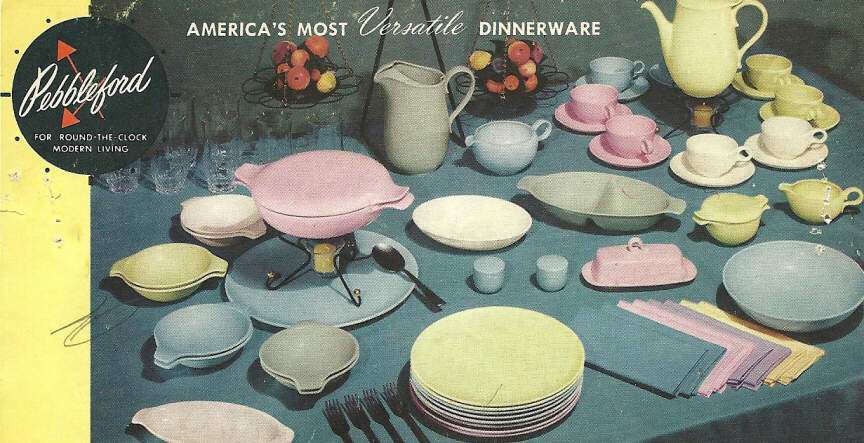
Pebbleford: Versatile shape in speckled colored glazes.
Towards the end of the 1950s, older shapes such as Garland, Laurel, Empire and Lu-Ray Pastels began to became less popular, whereas Versatile was fast becoming TS&T's best selling line. Gilkes also designed Classic - a more formal style of dinnerware. Shapes were still clean and free from busy embossing, but unlike Versatile, it had an elegant feel. Plates and platters had wide rims. Hollowware had pedestal feet and lids were given sweeping finials. Since both Versaite and Classic were clean, uncluttered shapes, TS&T would often mix flatware from Versatile and hollowware from Classic for more options. "Silver Mist" shown below was a good example of the mixing: plates, platters, bowls and saucers all came from Versatile, but the casserole, coffeepot, creamer and sugar came from Classic.
|
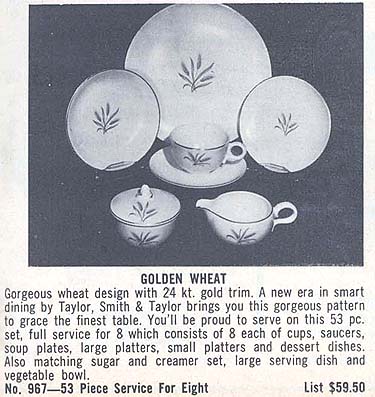 |
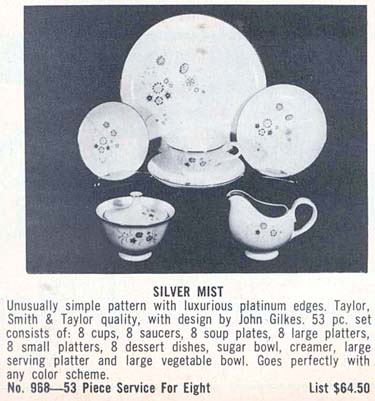 |
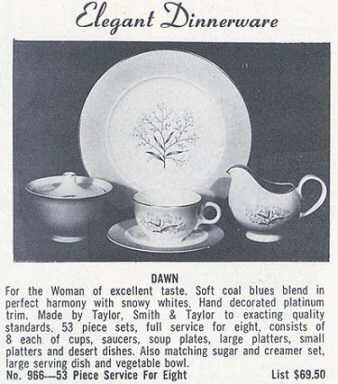 |
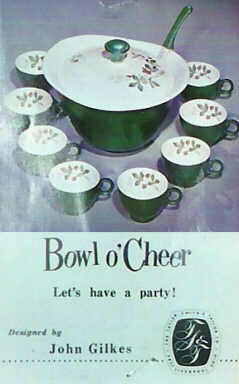 |
|
In the late 1950s, many American potteries were creating translucent dinnerware to compete with the ever growing imports of "fine China." TS&T's response was Taylorton -- another streamline coupe shape designed by Gilkes. Many pieces such as the insides of bowls and pitchers were glazed a contrasting color to go with the decals. Some of the more popular patterns on the Taylorton shape include Autumn Splendor, Rose Sachet, Happy Talk, Echo Dell, and Dianthus. |

"Autumn Splendor" on the Taylorton shape, 1959.
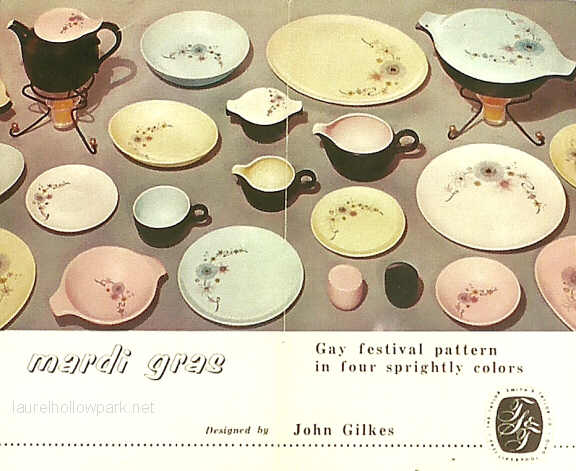
"Mardi Gras" on Pebbleford.
|
Other shapes created by Gilkes during his time at TS&T include Shadows, Chateau Buffet, Ever Yours, Colorcraft, Heathertone, and Taylorstone. Some of the more unusual Gilkes creations were for TS&T's Timbercraft.
Timbercraft was a company owned by TS&T, but it operated independently in the late 1960s. TS&T would make their own pallets and crates for shipping in a wood shop. There were several workers who were well trained in carving so TS&T formed Timbercraft to market wood products. Cheese trays, cutting boards, spice racks, candle sticks, and salad bowls were all fashioned out of walnut and maple. Bowls and cheese trays are often found with decaled ceramic inserts which were made at TS&T. In vintage advertisements Gilkes is credited with designing roughly thirty distinct pieces. |
| Examples of Timbercraft, 1968. |
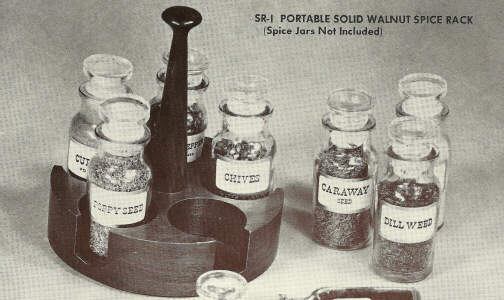 |
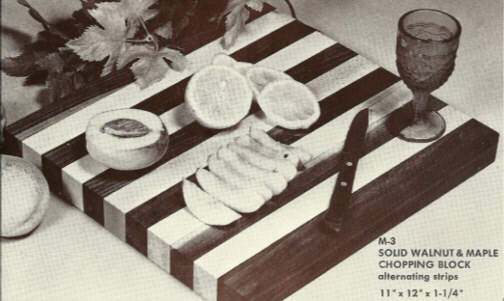 |
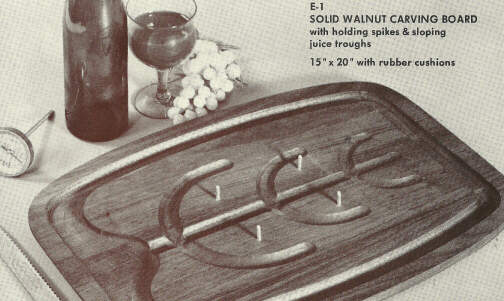 |
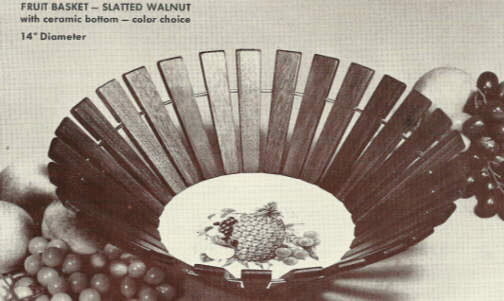 |
|
|